Japan | Meiji Shrine and Bunny Cafe
BY PARIS SUMPTER
Paris visits Meiji Shrine and the Raagf Bunny Cafe.
Paris Sumper studied abroad in Tokyo, Japan, in Summer 2017: http://eap.ucop.edu/OurPrograms/japan/Pages/language-and-culture-ICU.aspx
BY PARIS SUMPTER
Paris visits Meiji Shrine and the Raagf Bunny Cafe.
Paris Sumper studied abroad in Tokyo, Japan, in Summer 2017: http://eap.ucop.edu/OurPrograms/japan/Pages/language-and-culture-ICU.aspx
BY WILLA GIFFIN
If This is School, Let’s Have Class on the Weekends
One of the most central aspects contributing to my time in Florence has been my elective class: The History and Culture of Food in Italy. I’ve mentioned it in past blog posts, but haven’t given this once in a lifetime class nearly the attention that it most certainly deserves. So here it goes… I hope I can do it justice.
Months before my departure to Florence, after reading descriptions of the culture courses my study abroad program offered, I decided that I wanted to take the food class (the other options were Art History and the Sociology of Love– both of which students in my program are currently thrilled to be taking). In reality, after seeing the word “food” in the course title, no further reading was necessary; the class chose me.
The enrollment period came around in December of last year, and having had friends go through my exact study abroad program in the past, I was advised to set an alarm for an ungodly hour in order to sign-up immediately, and ensure my spot in this highly coveted class.
Due to the different time zones, unsure of when the enrollment email would find its way into my inbox, and mostly because I am neurotic, I set an alarm to go off in twenty-minute intervals starting at 3:45 am.
After almost two-and-a-half hours of 8 jarring alarms, I received the enrollment notice at 6 am. It was a slightly tortuous night of restless sleep—but I reserved my place in the food class, and boy was it worth it!
Once in Florence, at orientation, Dr. Peter Fischer, the enthusiastic and beyond knowledgeable food professor, was only described to us as being, “very German and very loved.”
On the first day of lecture it became crystal clear why, Peter (as we call him), was so raved about. He passed out the class syllabus that set the tone for the incredible class and instantly deemed all future syllabi disappointing bores. Most thrilling was the class date labeled, “Midterm Exam Followed by Gelato Tasting.”
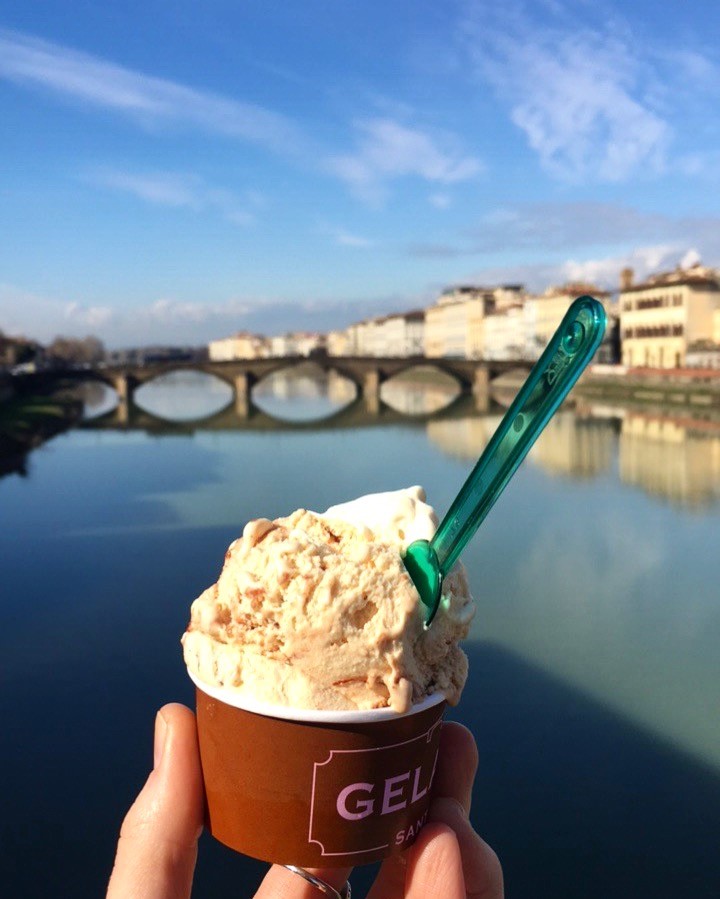
Class itself is always something to look forward to. Every Tuesday and Thursday, Peter begins lecture by asking us students to share stories of interesting food experiences that we’ve encountered since our last meeting. We talk about new dishes we’ve tried, look for the cultural reasoning behind why the waitress rolled her eyes when we asked for a to-go box after dinner, or tell stories of how when we’d tried to order a caffe coretto (espresso with a shot of liquor) but, lost in translation, received what we had accidentally asked for: cornetto (a croissant).
In class Peter brings Italy to life for me through analyzing the history of the food—one of the most central aspects to human survival in general, and encompassing even more grandiose, far-reaching meaning in Italy, where the meals taste like memories.
Peter has taught us some Italian food survival skills, like why a true Italian will never ever drink a cappuccino after breakfast (because the high milk content is thought to be hard to digest). And, I specifically, learned the valuable lesson that an Osteria is not a restaurant that sells oysters, like I’d originally thought and told a friend (sorry Sofia), but rather, typically, a less expensive restaurant.
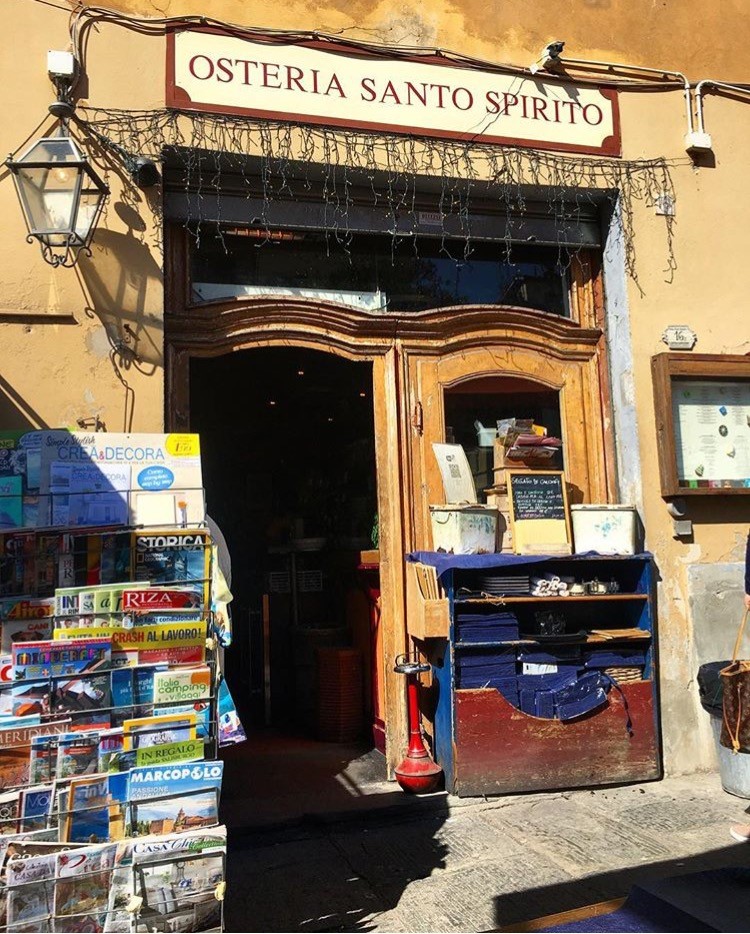
Peter has lectured on a variety of fascinating food facts, like the American fast food movement, and the Italian counter-movement, Slow Food, which was sparked in protest of the opening of the first McDonalds in Rome in 1986. Californian chef and Farm-To-Table advocate, Alice Waters, is the Vice President of the international movement today.
We learned that potatoes, tomatoes, and corn originally came to Italy from the Americas, but Italians considered the Native Americans to be cannibals and initially refused to eat the food of “savages.” It wasn’t until a food shortage that the Italians turned to using these American vegetables, however, they made sure to disguise the foods’ original form, transforming potatoes into gnocchi and corn into polenta.
We learned that Italy wasn’t politically unified until 1871, and wasn’t culturally united for many years after that. Italians attempted to create a sense of solidarity through their cuisine. Pasta functioned as a unifying symbol, as its different shapes, sizes, and ways of being prepared, represented the regional diversity, but its same basic ingredients signified a one-ness.
We learned that during the first wave of Italian immigration to the United States, Italy was not culturally unified, thus there was not yet an archetypal “Italian.” It wasn’t until migrating to America, that Italians, as outsiders, honed their identity and discovered what it meant to be “a true Italian,” all while learning how to be “American” at the same time. Studying this, led me to examine what I think it means to be an American, through my own experience as an outsider in Italy.
Last week we all turned in our research papers that we wrote with the freedom to discuss the food related topic of our choice. If you have to write a paper, what better topic than food to write about? As long as you have snacks handy in the drafting process. My essay was titled “Dinner the Implications of the Italian Verb and the English Noun” and writing it, made me even more enchanted with the Italian family style dinners.
…
Besides learning in the classroom through remarkably engaging power points and lectures, Peter has taken us on numerous field-trips (like on a chocolate tasting!!) that I will remember even more fondly than the crunchy, savory, taste of my most favorite panini.
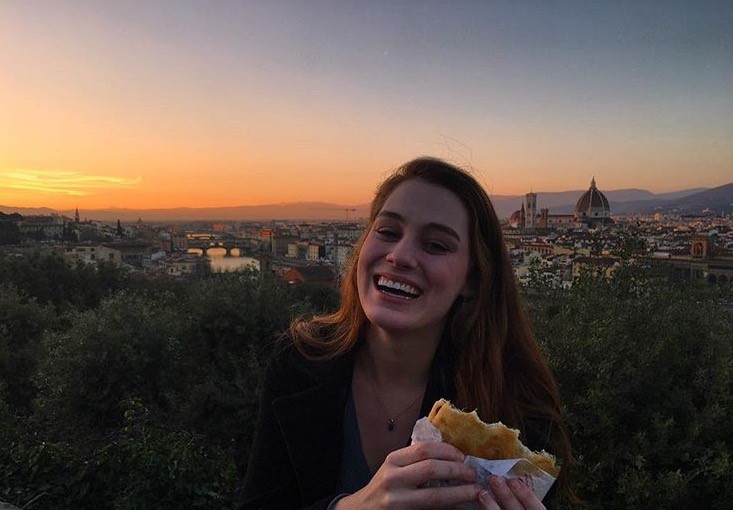
This Thursday, Peter walked us over to the Florentine Community Garden. The old running track, turned herb garden, was covered in raised plant-beds, and pink flowering trees (happy spring!). We met Giacomo, the gardener, at the entrance, and in his hip, plaid flannel shirt and light blue jeans, he looked more like he belonged in San Diego than amongst the other peacoat- enthusiast, leather-shoed Italians.
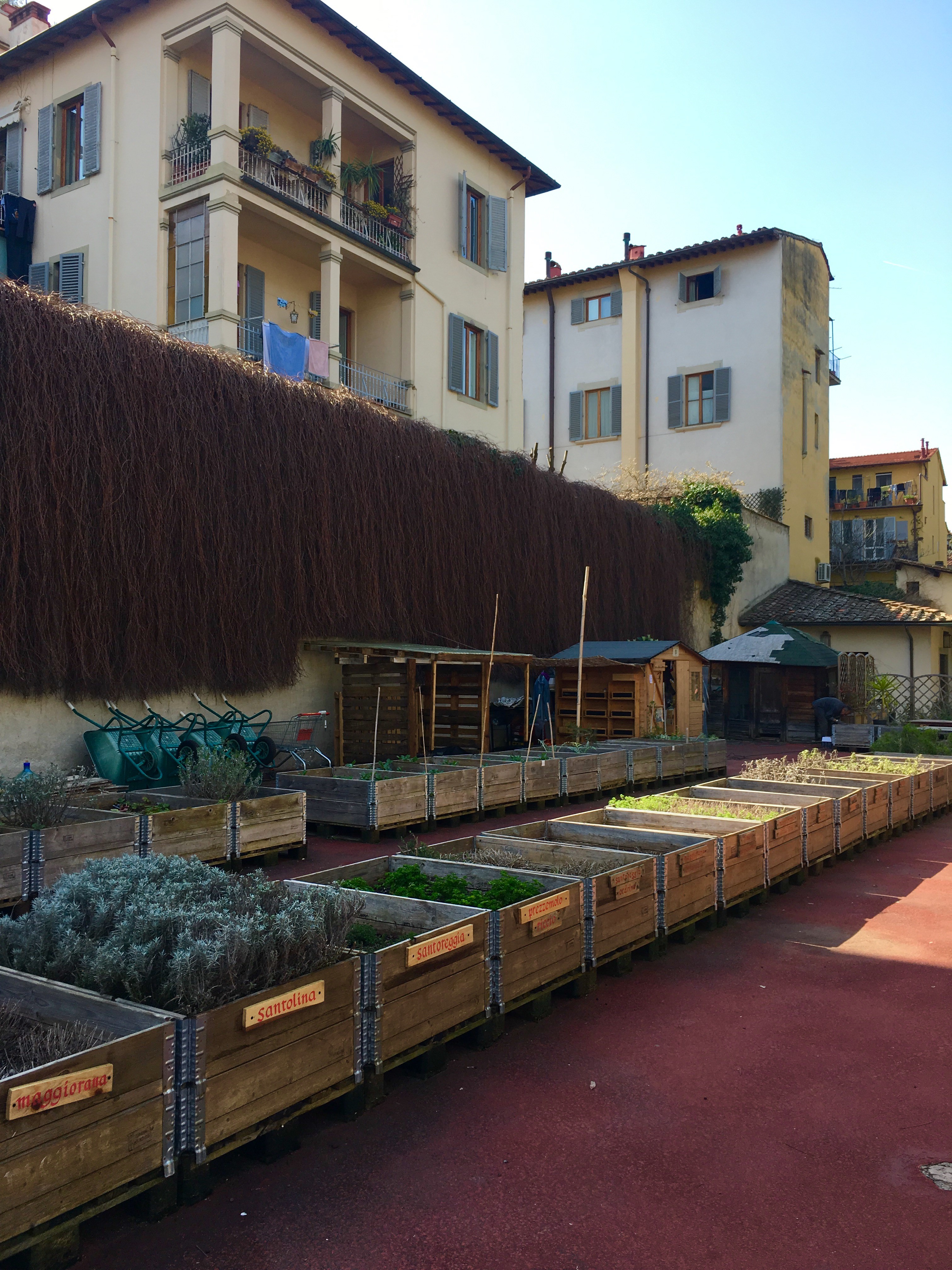
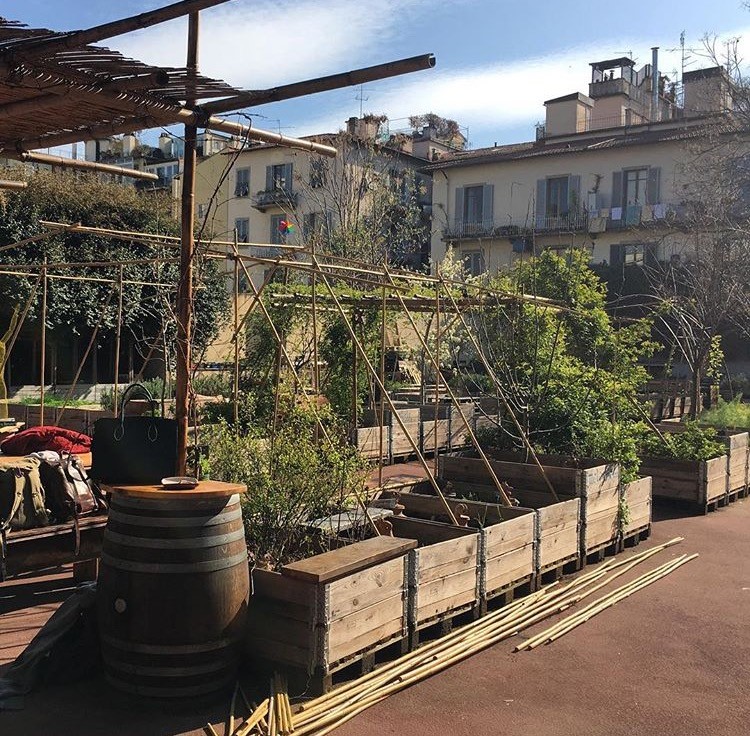

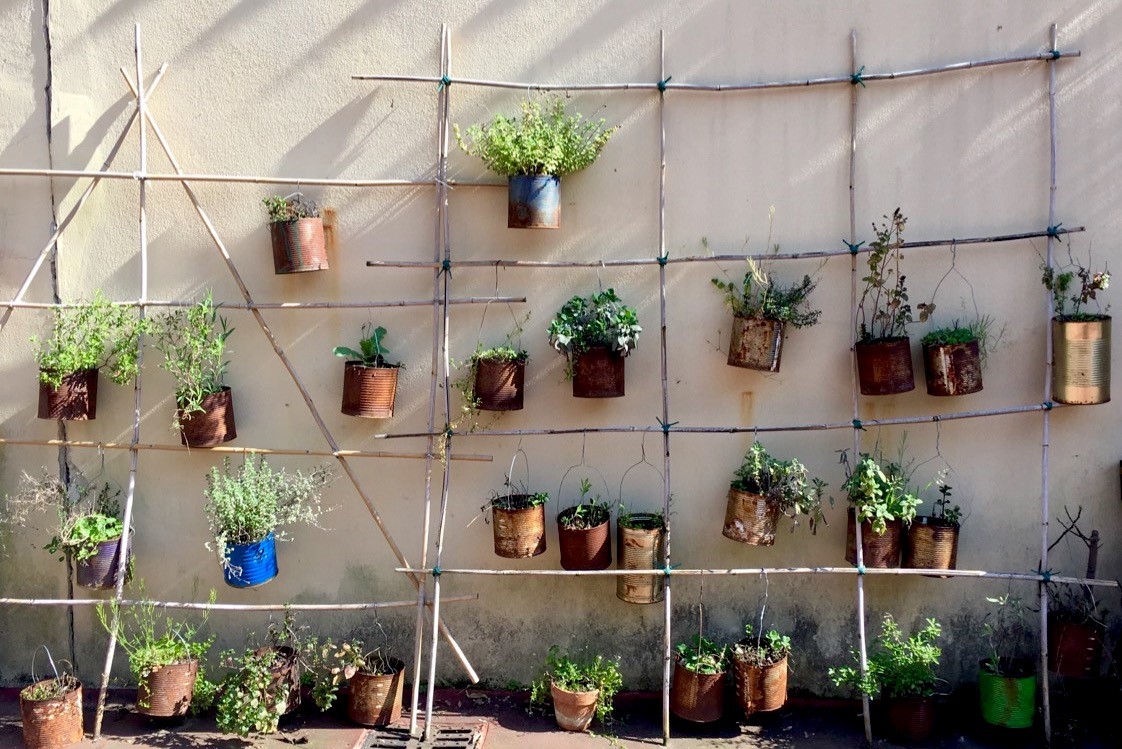
Giacomo showed us around his sustainable herb garden, focusing most proudly on his composting, his rainwater supplied bathroom sink, and his fishpond that serves as mosquito repellent. We walked around the garden, admiring all of the unique hybrid herbs Giacomo was growing– lavender mint, cranberry sage, tangerine thyme, just to name a few.
As a class, we decided on six herbs to pick, and then we each took turns chopping them up as finely as possible. Once the herbs were hacked to a pulp, Giacomo brought out a stash of fresh, homemade ricotta, separating it into three small bowls. We then combined two chopped herbs into each bowl of cheese and stirred thoroughly. We were given delicious bread and slathered it with ricotta, along with various salts to add if we wished. All three of the herbed ricottas were absolutely delicious, but my favorite was the lavender mint and chive with a pinch of black, Greek salt to top.
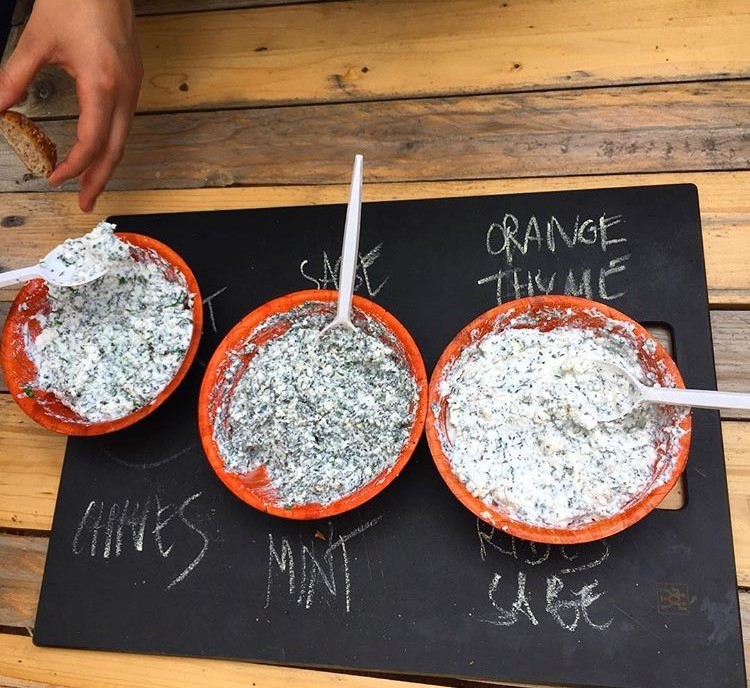
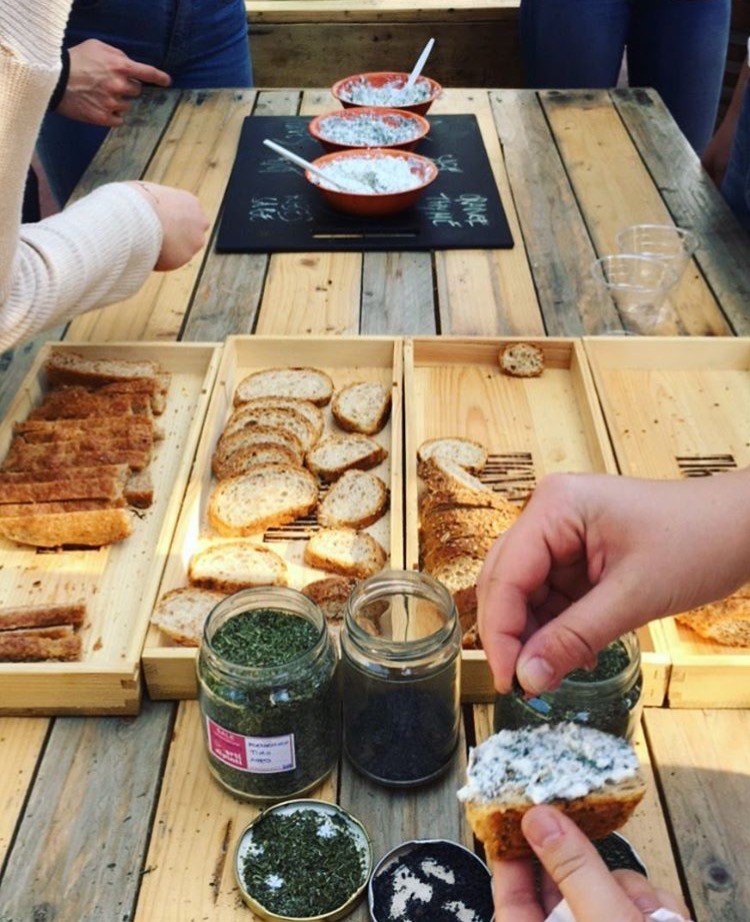
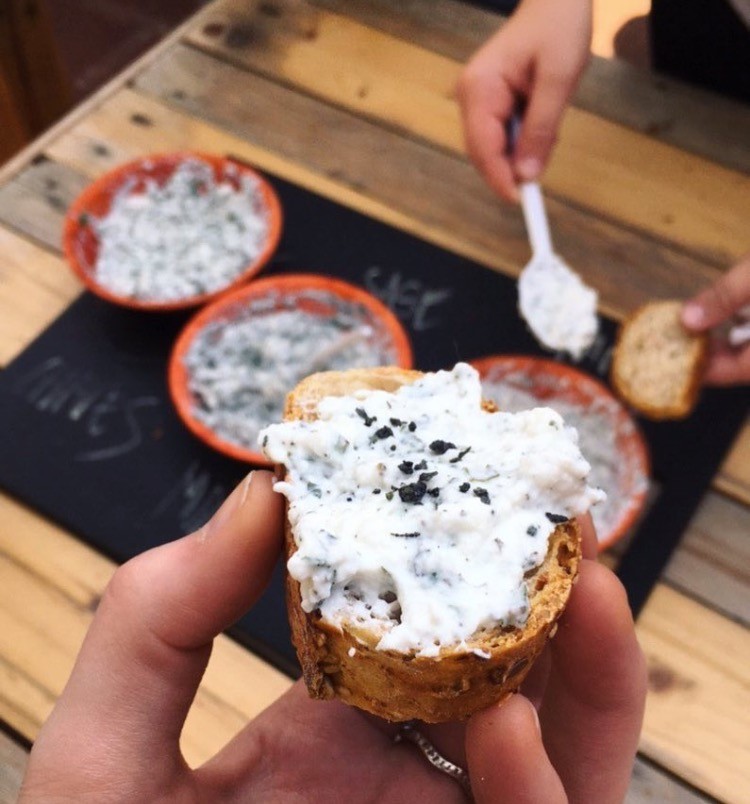
Two weeks ago, our class of twenty took a daylong field trip to a small winery in the most enchanting chianti countryside. Chianti Classico wine maker, Paulo, walked us around his vineyard and taught us about growing grapes and the fermentation process. He brought us into his old stone house and showed us his downstairs cellar. The electricity was out, so we did our tour and wine/olive oil tasting by candlelight. It was a far cry from any school field trip to the local library I’d ever been on.


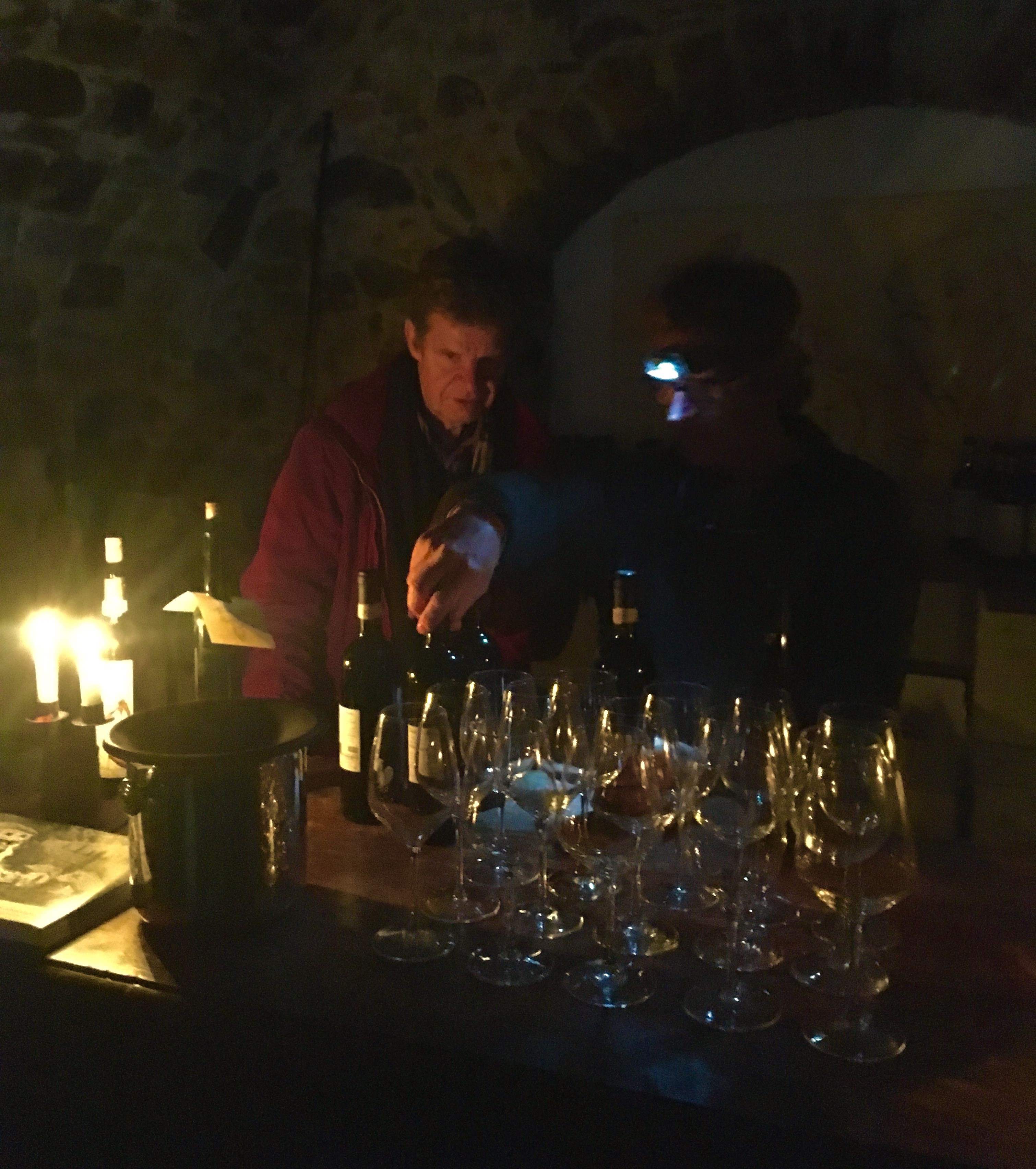
After the winery, Peter took us to a small town to eat lunch and drink some more wine at a bustling, down-to-earth Trattoria where we (definitely) over-indulged in a four-course meal. Our giant meat and cheese plate, was followed by a heaping portion of pasta e fagioli (pasta in white beans). A mixed-meat tagliatelle was next (I’m always a little weary of “mixed” meats, mostly because I’m afraid of eating horse… but if I didn’t think about it too much, it tasted good). Then came the pork stew, which was followed by the dessert wine, delicious biscotti, dense chocolate cake, and the concluding coffee, of course.
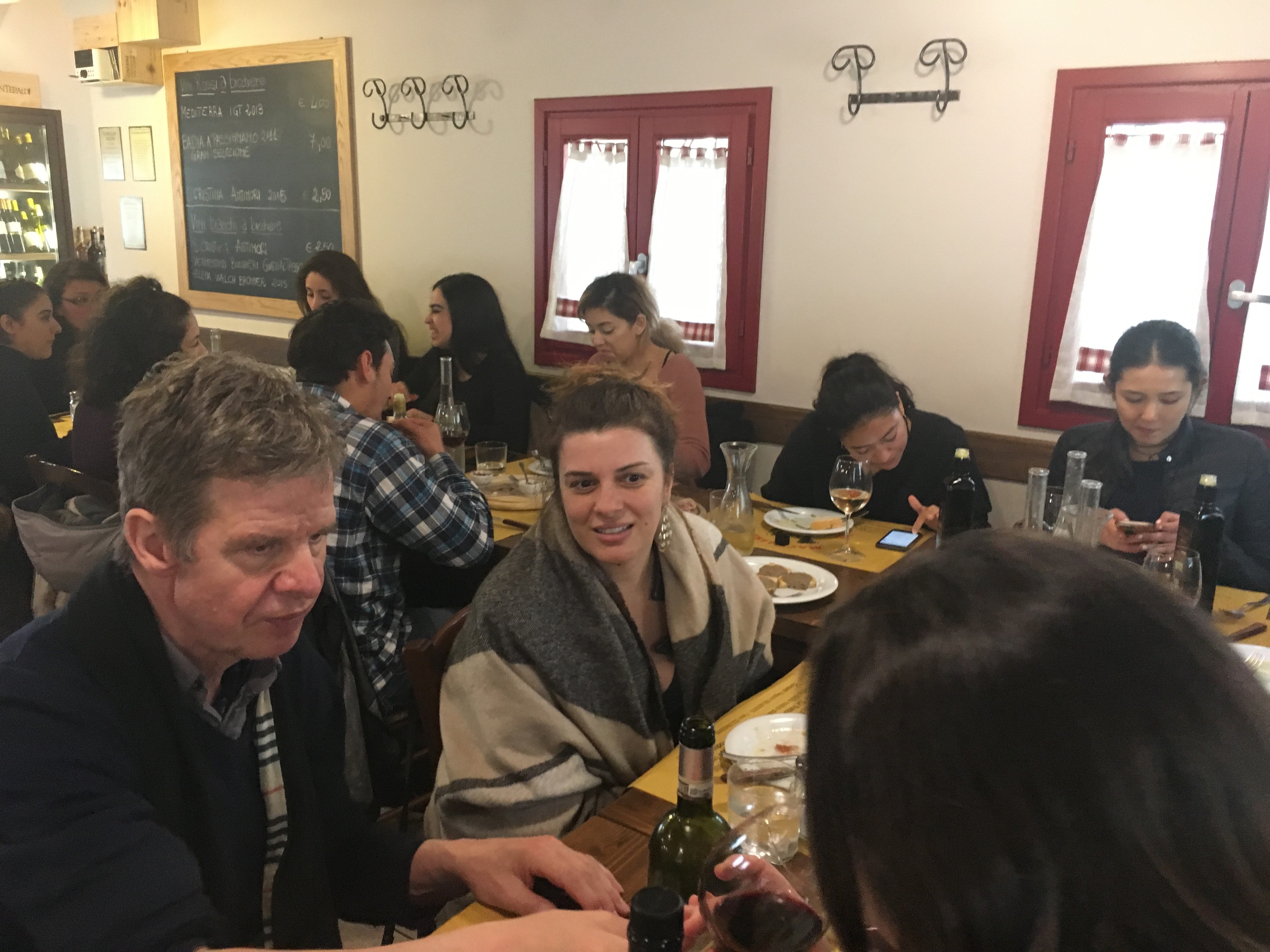
By the end of lunch, none of us could walk straight—mostly because we were so full (as if we had eaten a horse) but also the wine certainly didn’t help.
Somehow, we managed to waddle back to the bus that carried our very full bodies back to Florence. On that ride home, feeling happy, plump, and satisfied, I stared out the window as we wove and winded through the most breathtaking Tuscan countryside. Seeing the vineyards that braid their way up the mountainsides, come and go from my line of sight, I couldn’t help but think about how this was unlike any day of class I have experienced, or will ever experience again in my life.
I am one lucky foodie.
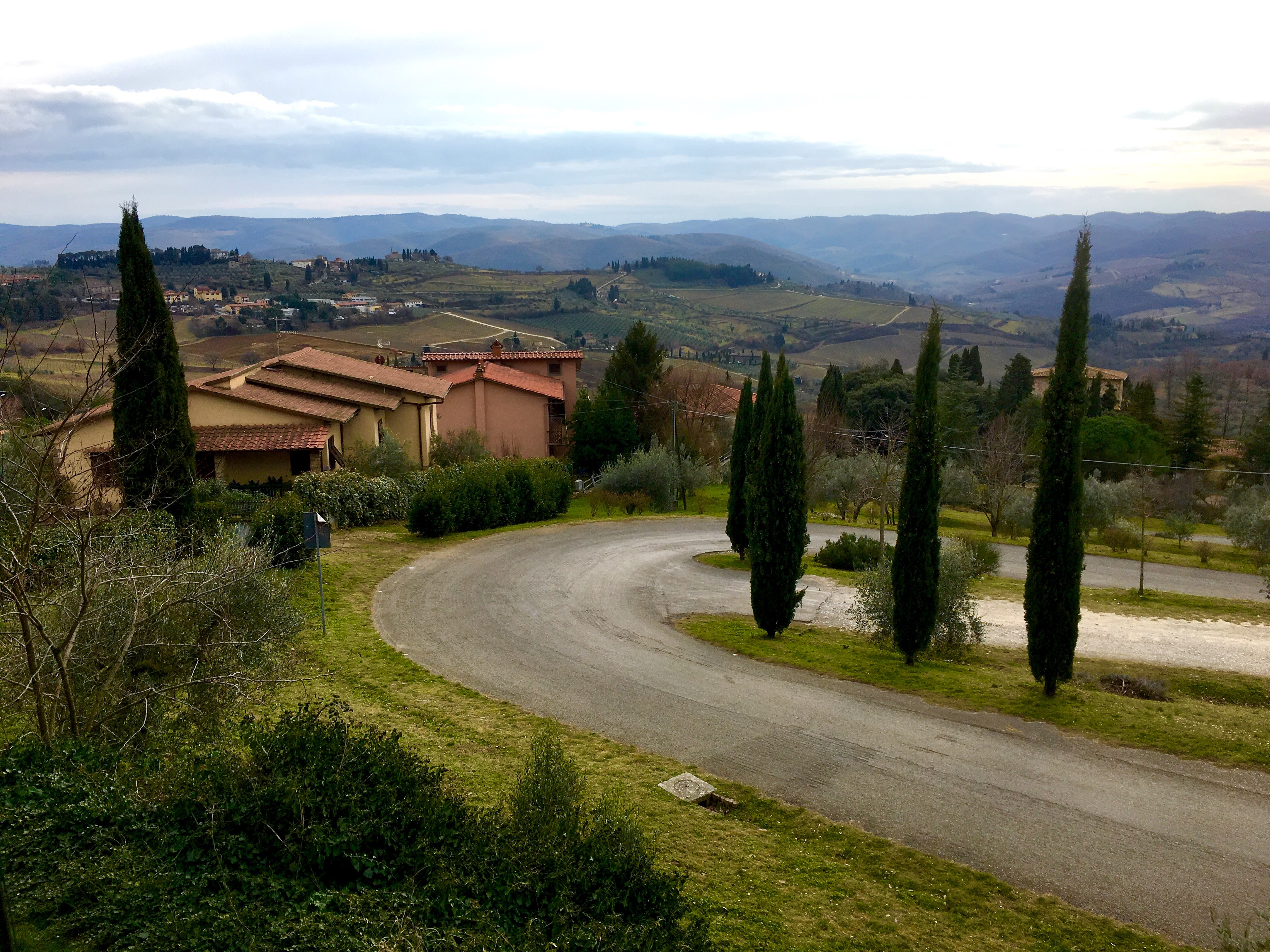
BY CHRISTINE PAHEL
Final Reflections
Well, that time is here. I’m leaving Sweden. I sit here writing this as I should be packing. But, then again, I’ve never been one for packing. It’s a little odd still being here because practically all of the international students and many of the Swedish students have returned home for the summer, and the new incoming UCEAP class isn’t here yet. While it is a little lonely without so many of the friends I’ve made during my time here, I don’t regret taking the opportunity to stay here, even if its just a few days longer. Honestly, even though I do miss my friends back in the states, I don’t want to leave Europe. I love it here.

I know when I get back home the first thing people are going to ask me was what was my favorite part. It’s an answer you are expected to have. However, I have no idea how to answer that question. I’m not saying that every moment was picture perfect. It certainly was not, and you shouldn’t pressure yourself to have every moment go right while here (especially when it comes to exams in Sweden). That being said, the whole experience seems like a blur. I can barely remember what it was like before coming here. Prior to this, I had never lived on my own, never been to Europe, never planned my own flights, never wrote in-depth research papers, never set up an EEG, never lived in a community where I didn’t know the dominant language… there were so many “never”s. Being abroad has made me realize how many “never”s I still had that I wanted to experience. Perhaps my favorite part of being abroad was learning that want to come back. Not to Sweden in particular, but I do know that I want to live back abroad in as many countries as I can.
While I loved my time abroad, I had friends that were as anxious to go home as I was to stay abroad. I think we too frequently believe that studying abroad is going to be the epitome of our college experience. At this point, it is for me; however, I know it wasn’t for many others. I’m not saying that to scare you away from studying abroad. I definitely think moving to a place that is out of your comfort zone is necessary to better understand the lives of those around you. But you will face struggles if you choose to come abroad. I don’t want to sugar coat it and have you be surprised when you are thousands of miles away from the place you previously considered home.
Classes will be tough. Don’t fall into the trap of thinking that since you go to such a world renowned college system that the classes will be easy—they aren’t. Each college has a different way of presenting material, studying, and examining, so expect to be inexperienced in the classroom. It’s kind of like being a freshman again in a course filled with upperclassmen. The people around you are used to the system whereas you are just getting your feet wet.
Also, being away from relatives is tough. If you have a close knit family, it will be even tougher. I was fortunate enough to have some of my relatives visit me, but not everyone will have this opportunity. I suggest Facetime, Skype, iMessage, and WhatsApp to help stay in touch with your family and friends while abroad. Being in contact definitely helps ease any homesickness. I Facetimed my parents once a week to get an update on things back home, which definitely helped me (and helped them stop worrying about me so much).
Perhaps the toughest thing, depending on what country you choose, will be not knowing the dominate language. Having to constantly attempt to use the limited phrases you know, and then pulling out the translator when all else fails can get frustrating and be humbling. To me, it was difficult to learn the language. I would try to get through the entire checkout process using only Swedish, so I could improve my skills, but the second they have to match my credit card to my ID (my passport), they would automatically switch to English and not another word would be in Swedish. Though it was done for my comfort and convience, it made learning to speak the language difficult and made it super easy to be lazy in learning Swedish.
Well now that I’ve addressed some of the difficulties of studying abroad, I want to move to a more positive note—travel. My previous blogs have focused exclusively on Sweden and briefly on Copenhagen. However, to not speak about travel would be to exclude a major part of the study abroad experience, especially since it is a main reason why people chose to take their studies to another country.
While abroad, I traveled to England, Scotland, Germany, Denmark, Vatican City, the Netherlands, Ireland, France, Switzerland, Hungary, Spain, Portugal, Finland, Norway, Italy, Belgium, and of course Sweden. Practically every weekend during my time here, I was in a new country. All my free time was devoted to scanning travel websites to see which countries were the cheapest for each weekend and then convincing a group of my friends to go with me both to have company and to save money on Airbnb costs. Traveling in Europe is cheap if you get down a system. The cheapest flight I had was only $6! Many of museums offer student discounts, and with your residence permit, you get into the Louvre in Paris for free! Travel smart, but don’t let it distract you from your studies too much. I know some people here who have failed their classes, partially because they were too distracted by traveling. Definitely spend a good portion of your time traveling the country you are staying abroad in. That doesn’t mean just the capital—find the small cities too in order to better understand what it truly means to live there.
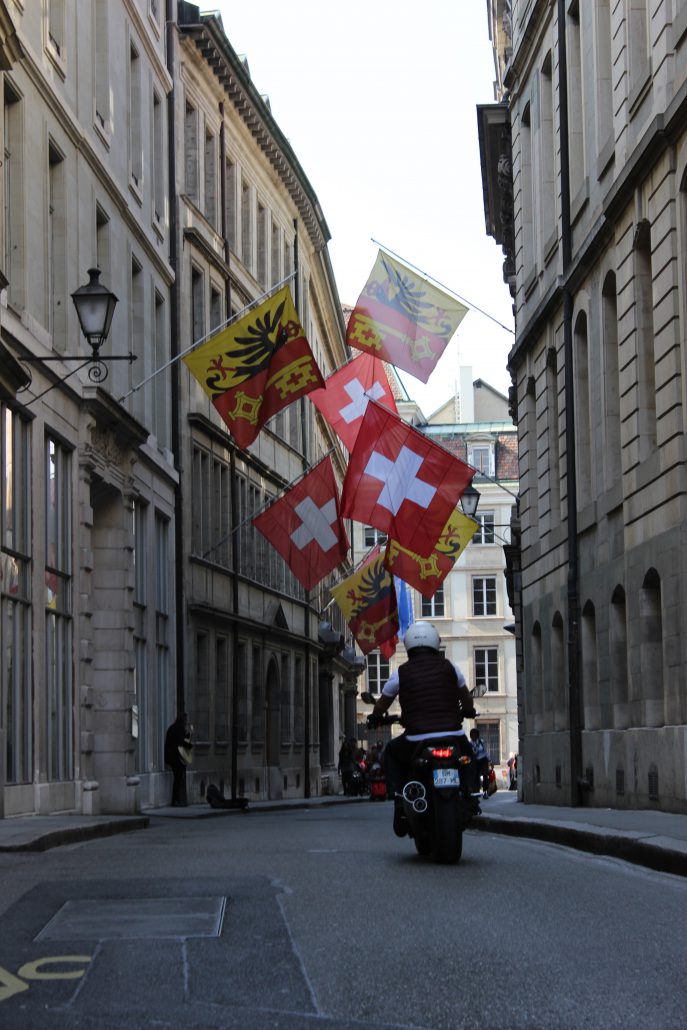

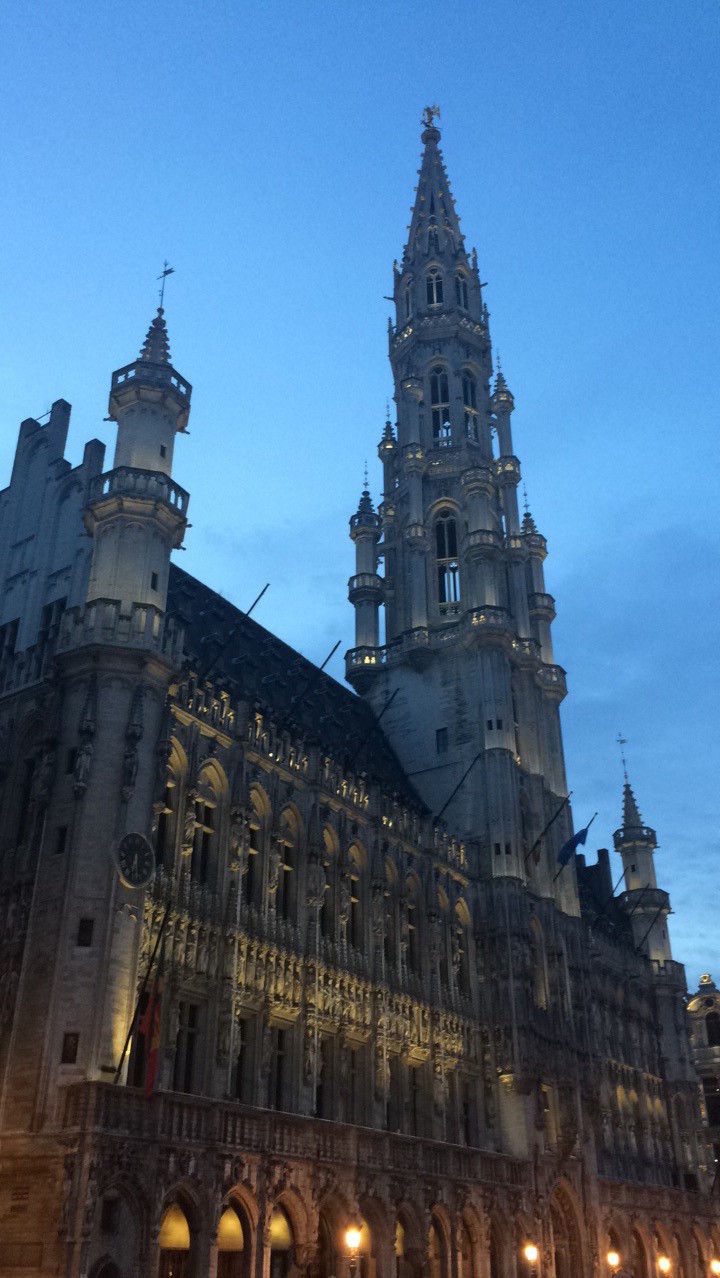
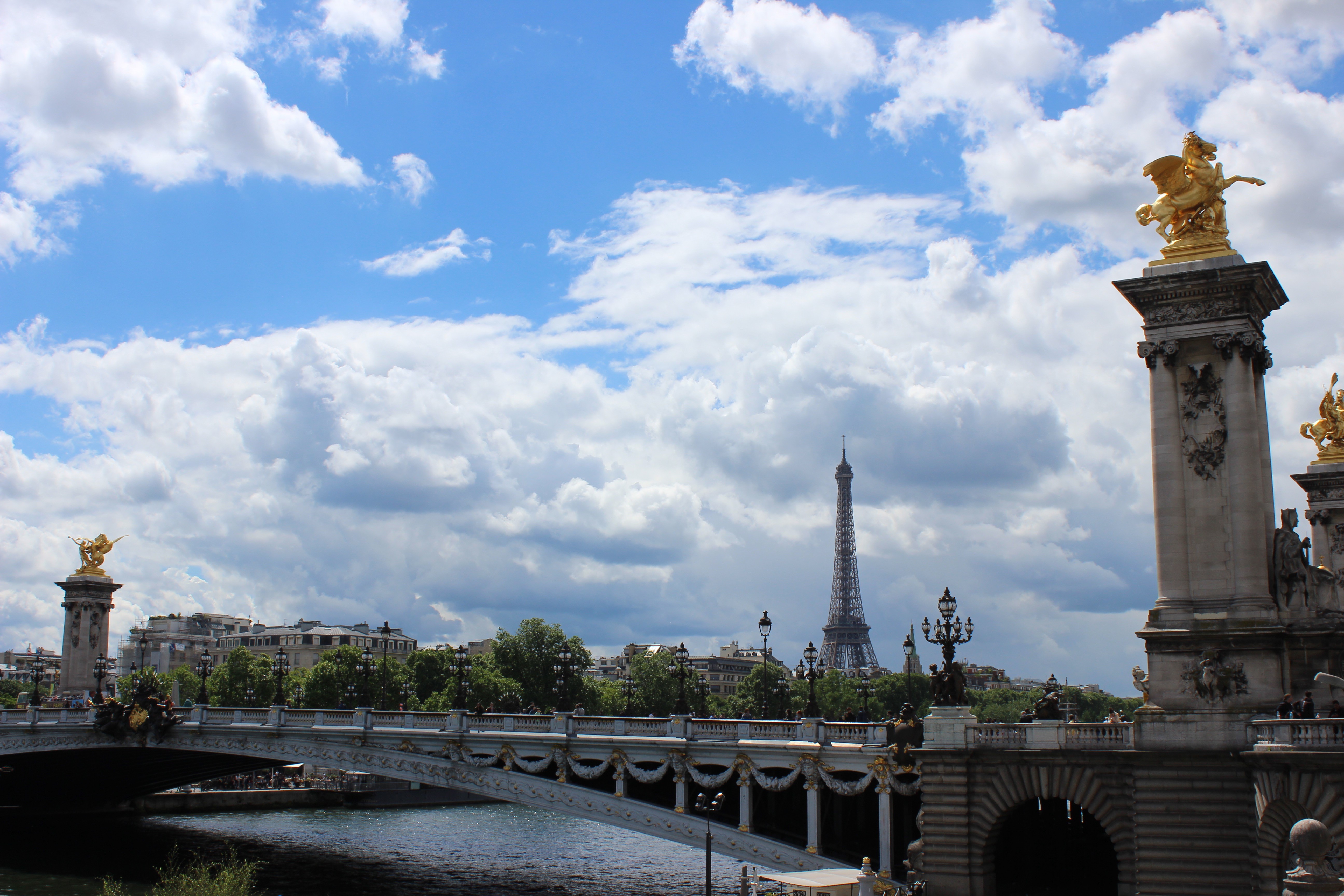
I have so much more to say about my time in Sweden, but this blog is getting long. I don’t quite have down my elevator speech for talking about my time abroad. My final piece of advice would be if you are on the fence about study abroad, do it. Like me, you might end up never wanting to leave.
Christine Pahel studied abroad in Lund, Sweden, in Spring 2017: http://eap.ucop.edu/OurPrograms/sweden/Pages/lund_univ.aspx
BY GRACE HEART
You’ve probably heard the stereotypical “study abroad was the best decision I made in college” and “I met my best friends during study abroad.” I have to admit I never fully believed this and always kind of assumed it was just an exaggeration or a way to sell a program. Having completed my study abroad experience, I can say that study abroad has been the best part of my college experience so far and I definitely have met some of my best friends during the program.
This summer program was only two months long, however, it was enough time for me to experience living in another country and build strong relationships with the other students. I went into the program as a rising sophomore which was unique. Of the other 140ish students, I only met one other rising sophomore and she went to UCI. Everyone else was a rising junior. However, I did not find this to be an issue in making friends. I didn’t know anyone going into the program, but this did not prove to be an obstacle at all. The program makes it pretty easy to connect with other students. You are with the same people all day long every day and even participate in organized activities together for the first two weekends.
Furthermore, with everyone studying the same subject, I found it even easier to connect with other students. Especially with physics being a difficult subject, everyone wants to help each other out and studying together can really augment your success in the program. Studying with friends also just helps you maintain your sanity while studying physics 24/7. During the week, you basically study all day every day so surrounding yourself with friends and allowing yourself to take breaks makes the physics part a bit more manageable.
On the weekends, take a break from physics. Go out into Dublin and explore or travel to another city or even country. The weekends are your time to have fun and travel. Even the professors expected us to have fun on the weekends so don’t feel like you’re being lazy because students are expected to travel on weekends. This gave me all the more incentive to work hard during the week so I wouldn’t have to worry about catching up on weekends. The layout of the program is basically: work hard during the week, have fun on the weekends.
I am so so grateful that I was able to participate in this program. I really have no complaints about the program itself. The professors do a great job of teaching you a year’s worth of physics in two months. Yes, the program is difficult, but that’s just because physics itself is a difficult subject. The tutorials force you to practice the content and are built-in study times. As long as you do your best to keep up with the content and review the course material on a daily basis, you will be fine. There will be times when you feel more stressed than you’ve ever felt before for any class, but I promise you do not need to worry about your final grade. They curve the class more than any other class I’ve taken and they do everything they can to help you get an A. Just remember to enjoy the program while you’re in it because it goes fast. I wish you all the best and remember to HAVE FUN!
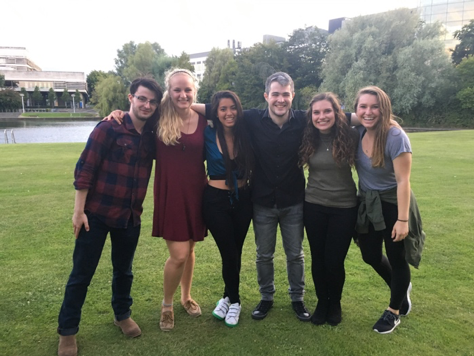


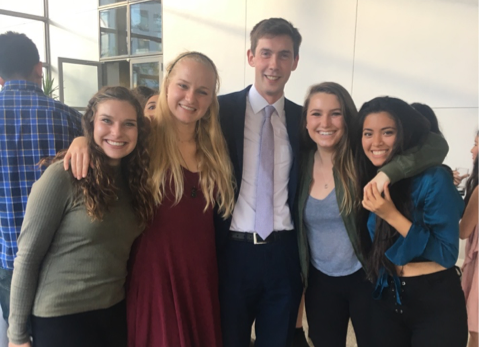
Grace Heart studied abroad in Dublin, Ireland, in Summer 2017: http://eap.ucop.edu/OurPrograms/ireland/Pages/science_engineering_summer_uc_dublin.aspx
BY BARRY YANG
LEARNING ABOUT BREXIT
It’s not in every class where you learn something that you can immediately translate to, or see an example of, in real life. Most of the subject matter is immaterial nature and a certain amount of imagination is required to visualize and project. Thus, when the subject matter is material and something contemporary it is a real treat as one can watch, analyze, and experience in real time.
This is what is occurring in my Brexit class. Under the instruction of Professor Helen Drake, I have been learning about the United Kingdom referendum to leave the European Union for the past 3 weeks. While the class itself is quite short in duration (only a month) and moderately biased, it is still very cool to learn about something that is literally happening as I write this. The best part about the class was that this past break I got to spend 10 days in the UK and actually live and see Brexit in context.
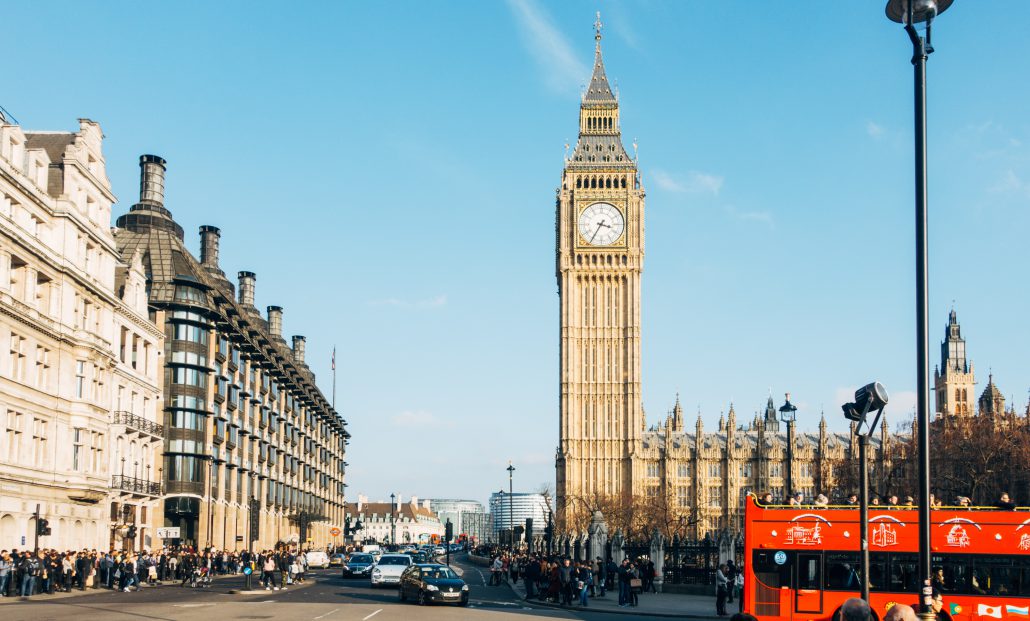
Professor Drake is in the remain camp; this was something she made clear to us on the first day of class. While she has her personal biases, she does try to be impartial and offer us the leave perspective as well. However, the class has been overall remain leaning and I feel there is a lack of effort to really try and explain or understand why people wanted to leave the UK. Instead of investigating the mindset of the leave camp, the professor just mostly points to the lack of education and ignorance as the motivations for people to vote leave.
While these two explanations are certainly valid and may even in fact be the most contributing factors to a leave mentality, it overly simplifies the other side and detracts from the complexity and nuances of the issue. After having visited the UK and interacted with the British, I can personally see and understand how a British individual can feel removed from Europe and not identify with the European Union. It is very understandable how this non-EU mindset can lead to Euroskepticism and culminate in a decision to leave the EU.
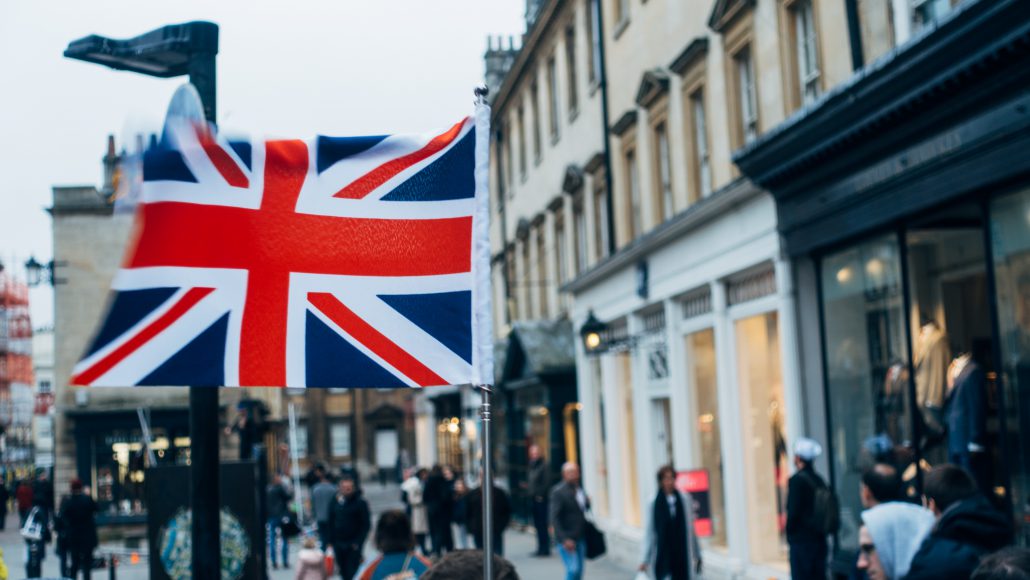
As part of our course we discussed the idea of how European is England, if at all. After seeing England in person, I personally feel a huge difference between the island and the rest of the continent. The British culture and just overall aurora is palatably different than the rest of Europe’s. From the architecture and language to the culture and social norms, Britain is arguably more American than European. While there is diversity in Britain there is also a feel of great homogeneity. This does not mean everyone is caucasian, it just simply means that there is sense of nationhood amongst the people. Even though individuals may come from different backgrounds and have different cultures, I felt a sense of unity amongst individuals in that there is an implicit overarching British culture.
A great example stems from this very traditional Indian restaurant I visited in the Fitzrovia district of London. While the food, culture, and patrons of the restaurant was distinctively Indian, the restaurant still served traditional British tea and most of the people were drinking it. Obviously Britain has strong ties to India because of historic imperialism and the acceptance of British customs amongst Indians have roots in this era of occupation. However, that does not detract from the fact that there is an overarching British culture present in non-English minority groups. This is purely an anecdotal experience, and I am sure there are groups living in England who refuse to accept or do not embrace British culture. However, in comparison to another continental European nation like France, I can personally feel a difference in how full integrated into the native society immigrants are and the varying senses of unity. This sense of cultural unity was not something I only felt in Britain. To a certain degree, I felt even stronger senses of hometown pride and cultural identity in the rest of the UK.
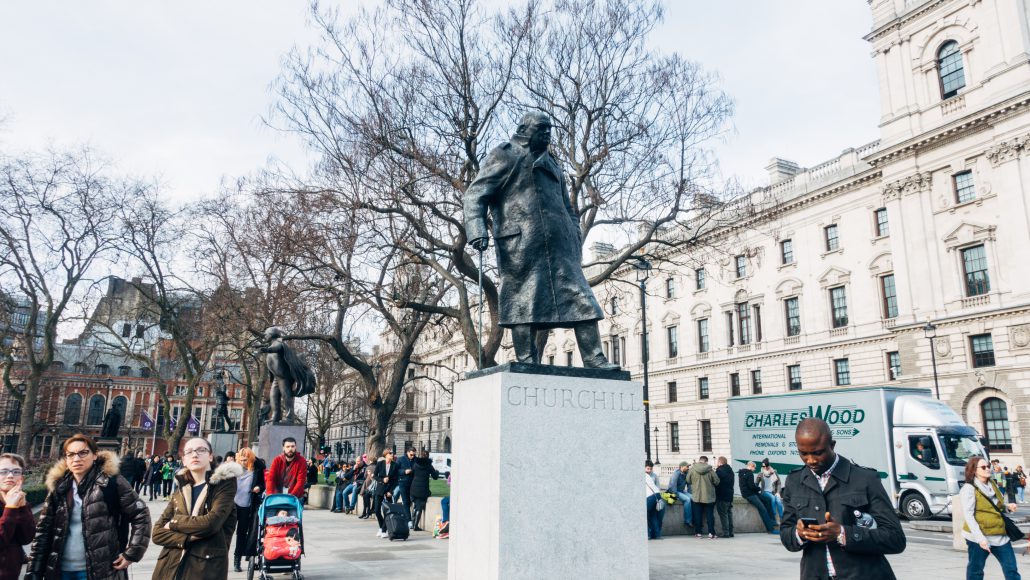
After seeing the UK in person I can very easily see how a British individual would vote to leave the EU because he or she does not been that Britain is European. I can equally see how an individual would vote to leave the EU due to a sense of British exceptionalism. After seeing London, I am genuinely amazed by the efficacy, friendliness, and sheer beauty of Britain. The towering statues of British thinkers and other important individuals throughout the city hints back at this feeling of exceptionalism and the many jaw dropping buildings and gardens/parks further contribute to this narrative. Not even being British myself, I totally felt a sense of British exceptionalism while I was in London and I can see how and why some British people hold their nation in superiority.
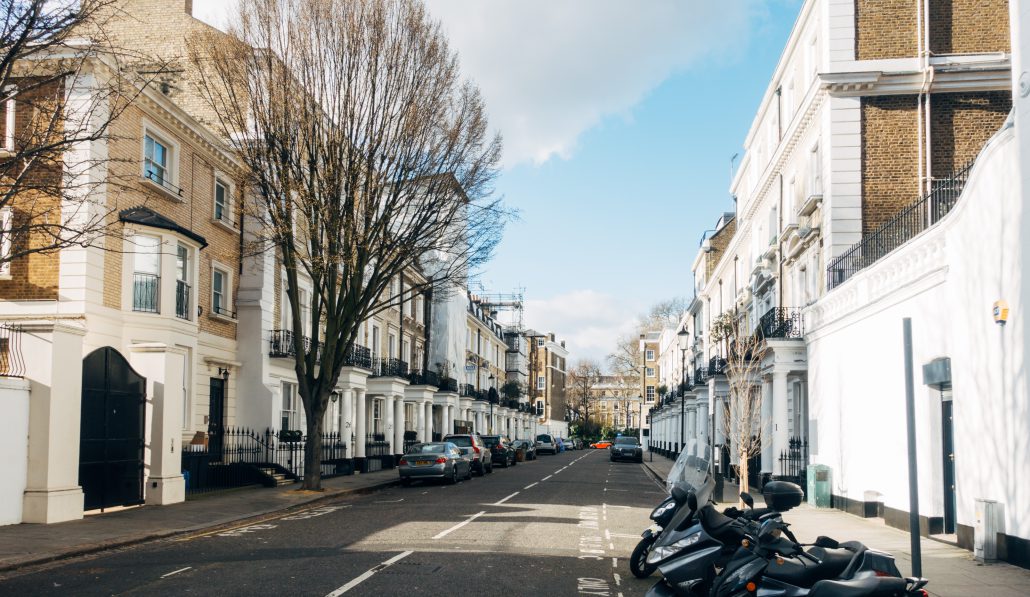
I am excited to see how the rest of my Brexit class plays out as we dive deeper into the topic and finish up our last week of class. I am very glad I had the opportunity to visit the UK and draw parallels from what I learned in the classroom to what was happening in real life. Before I came abroad, the explanations I heard for Brexit were along the same school of thought as those proposed by Professor Drake. However, after having learned more about the topic and being exposed to Britain in real life I can completely understand and believe that some people voted for Brexit simply because their country just did not fit in the EU. To a certain degree are they wrong? The British decision to enter the EU in 1975 was largely transactional, maybe its decision to leave in 2016 is largely emotional.
Barry Yang studied abroad in Lyon, France, in Spring 2017: http://eap.ucop.edu/OurPrograms/france/Pages/default.aspx
BY PARIS SUMPTER
Paris heads to Pinocchio Cafe to try some authentic Japanese pancakes.
Paris Sumper studied abroad in Tokyo, Japan, in Summer 2017: http://eap.ucop.edu/OurPrograms/japan/Pages/language-and-culture-ICU.aspx
BY CELIA CODY-CARRESE
One of my favorite works of art is The Garden of Earthy Delights by Hieronymus Bosch. A triptych painted around 1500, its three scenes depict the Garden of Eden, an excess of human pleasure on Earth, and a bizarre underworld. It’s fantastical and surreal and thus very ahead of its time, as the surrealism movement in the art world didn’t occur for centuries later. Every time I look at this painting I see something new, some detail I didn’t catch before – since there is just so much going on. Lucky for me, The Garden is housed at the Prado museum in Madrid, and I got to see it in person this past weekend. It’s displayed on a table in the middle of a gallery room, demanding attention. If you’ve ever had a favorite piece of art or even a favorite song, you know that seeing it up close, or hearing it live, is a special experience.
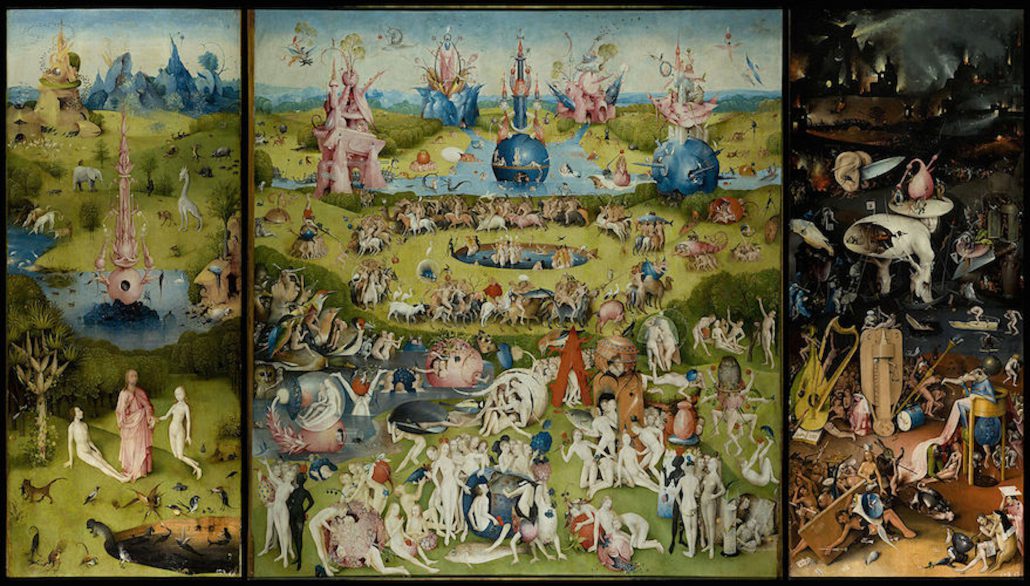
Little did I know that Hieronymus Bosch has an interesting connection to Spanish History, and that I would learn about him in my class at UCO Córdoba! Last week, my History professor pulled up the painting on Google Images and explained that the painting once belonged to Felipe II, considered one of the most important kings in Spain’s history. Felipe was extremely powerful and controlled vast territories, but at the end of his life he became a recluse, never leaving El Escorial, a grand palace he built for himself. As my professor explained, Felipe was extremely paranoid and convinced that the souls of his enemies were inside the people depicted in The Garden of Earthly Delights. Furthermore, within El Escorial Felipe had many Bosch paintings, which he arranged around his bedroom and stared at all night, instead of sleeping. He also unfortunately burned many of these paintings – but thankfully not The Garden.
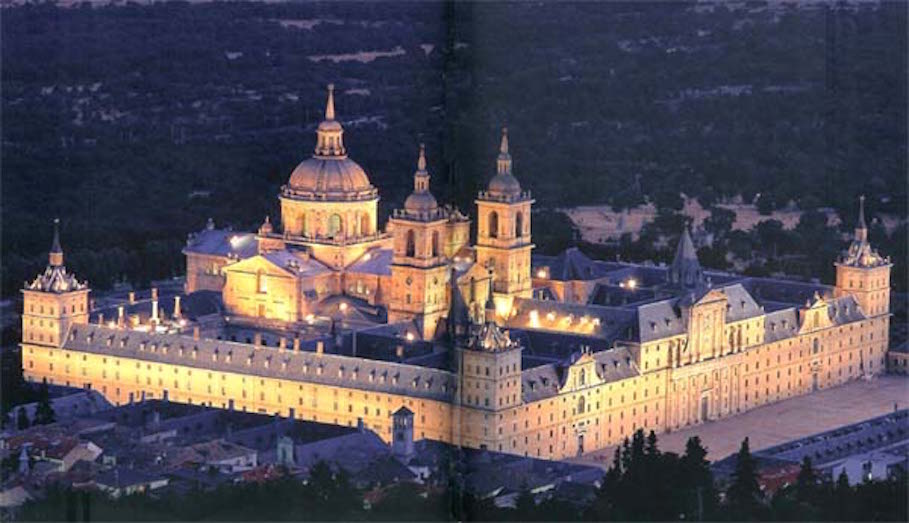
This story is really interesting to me because I already loved this painting, but also because it illustrates to me the core of what study abroad is about. I didn’t even know Bosch’s masterpiece was in Spain until I was looking up information about the Prado before I went. And I also wasn’t aware of the connection it had to Spain’s extremely powerful and influential king. To learn about it all here, and have the opportunity to see it in person, is probably the best example of “hands on learning” I’ve ever experienced.
And this isn’t the only such example of history, art, and my environment interacting in this way. Andalucía, and specifically Córdoba, were under Muslim rule for many years before the Christians came into power. During the 10th and 11th centuries, Córdoba was the capital of the Califate in Europe, Al-Andalus, and a place where Christians, Muslims, and Jews lived in relative harmony. Muslims had higher social standing and didn’t have to pay taxes, but there was not regular discrimination or violence based on religion. One of my favorite things about Andalucía and Córdoba in particular is this example of religious tolerance and coexistence. The city’s history is preserved in the architecture, such as the Mosque-Cathedral and the city’s synagogue. But it also shows up in smaller, less obvious ways, scattered throughout the city. For example, there is a small symbol you can find in various historical sites in Andalucia – my professor told me so far he has found 23 in Córdoba. It is a brass plaque on the ground, an image of Spain and Portugal which is made up of Hebrew letters. The symbol serves as a reminder of the Jewish community in Al-Andalus. I have seen one of these in Toledo as well, and they can be found in many cities that were once part of Al-Andalus. In both Córdoba and Toledo you can find synagogues, still preserved from the time when Jewish communities lived in Spain. We visited the synagogue in Córdoba on a class trip, and the interior decorations were strikingly similar to the Alhambra in Granada. The exchange of design techniques and aesthetics is clearly on display among these very distinct buildings.
Plaque of Iberian Peninsula with Hebrew letters

Synagogue in Córdoba, with Hebrew inscriptions, Arabic designs, and a painted cross
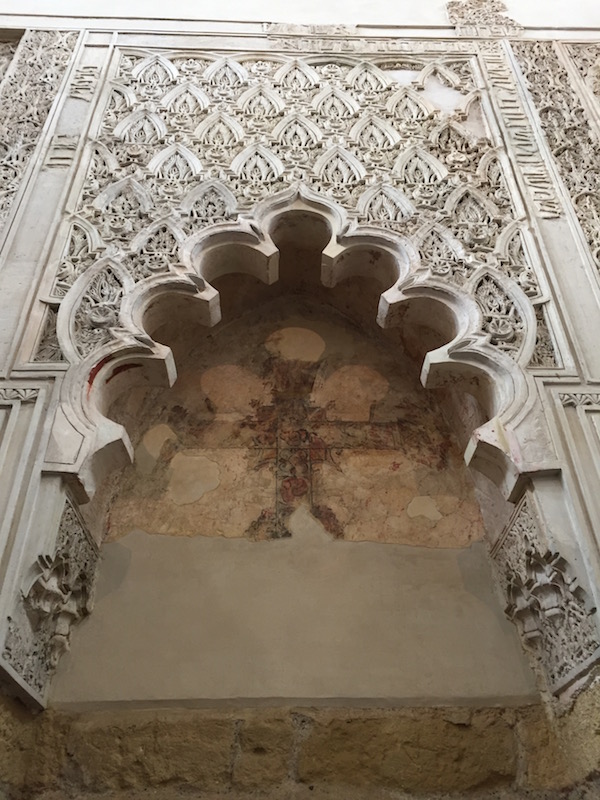
In addition to being a city of religious and cultural exchange, Córdoba was also an important political city. For the Romans, Muslims, and eventually Christians, Córdoba was a place of administrative and strategical importance. During Fernando and Isabel’s rule they lived in Córdoba, and from there directed the military campaign to expel the Muslim’s from Granada. It was at the Alcazar palace in Córdoba that Christopher Columbus came to make his case for exploration to Fernando and Isabel, and they agreed to fund his journey. We went to the Alcazar on a field trip, and in the gardens there is a statue to mark the event.
Fernando and Isabel receiving Columbus
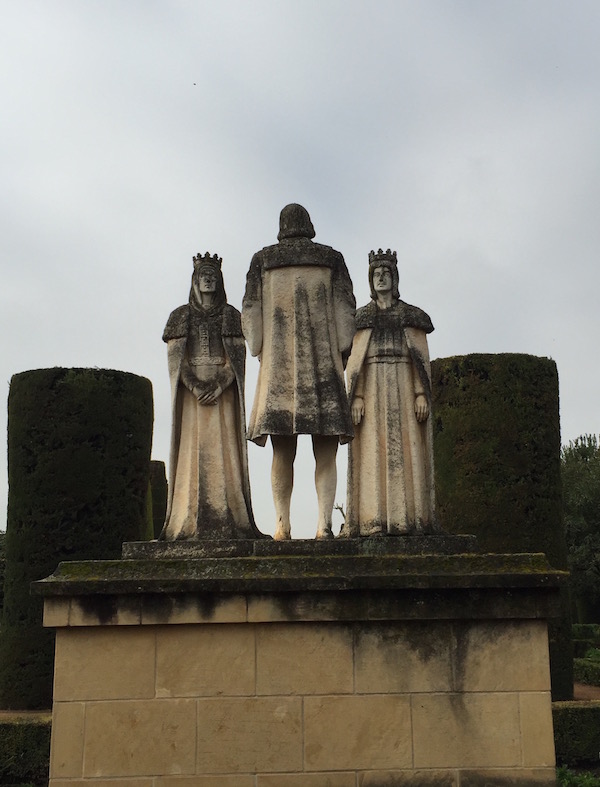
At the Alcazar there is also a room where many Roman mosaics are on display. These mosaics were created in the 2nd and 3rd centuries when the Roman Empire extended to Spain, and were discovered under a large plaza in Córdoba. The mosaics were originally the floors of homes belonging to wealthy families, and were reconstructed piece by piece for the current display. Because Córdoba was the capital city for different societies throughout history, each of them essentially just built on top of the previous civilization. Archeologists can’t uncover all of the ruins because they would literally have to tear down the current city to do so!
One of the Roman mosaics at the Alcazar in Córdoba

My history professors have both talked about what they see as a lack of historical memory in Spain. In their view, many Spanish people think of Spanish as being Catholic and European, while not understanding the historical significance of Al- Andalus and the Muslim and Jewish populations here. Similarly, in school children learn about Columbus “discovering” the new world and what a success it was for Spain, without discussing the disastrous effects his voyage had on Native Americans. Evidently, we have the same problem in the United States – I didn’t learn the other side of the story of Columbus until I was in high school. Many Americans also lack an understanding of the racial dynamics and systems of oppression throughout America’s history, which still continue today.
We travel to other countries to learn about another culture, another history, different people. This culture and history is enshrined in the streets and buildings we find ourselves amongst, in art and in stories. But the truth is there are different stories and cultures wherever we are, whether we are in our hometown or in an entirely new place. We just have to be willing to ask questions and to notice what’s around us – no matter where we are.
Celia Cody-Carrese studied abroad in Cordoba, Spain, in Winter 2017: http://eap.ucop.edu/OurPrograms/spain/Pages/exploring_andalucia.aspx
BY WILLA GIFFIN
It’s been yet another monumental week here in Florence—one for the books.
On Tuesday the professor of our History of Food and Culture Course (I still can’t believe that’s the academic class I’m taking here) led us on our second walking tour through the open markets and around the center of Florence. He pointed out the public water fountain that has spigots for both flat and bubbly water, showed us a hole-in-the-wall, worker-populated, Osteria (that wouldn’t allow the Secret Service to clear out the restaurant before Barbara Bush had lunch there, so she ate amongst the locals anyway), and took us to the stand that makes their delicious paninis on the very best bread. The tour also included a cannoli tasting, for research purposes of course…
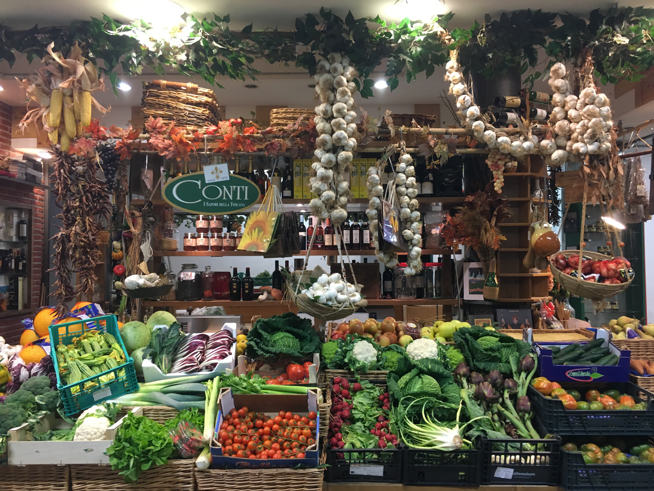
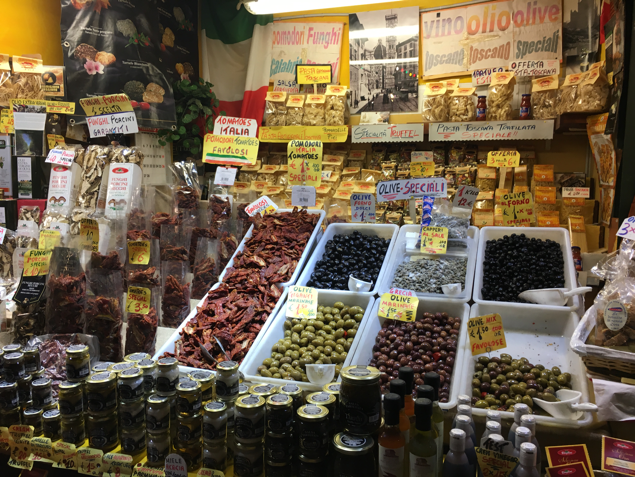
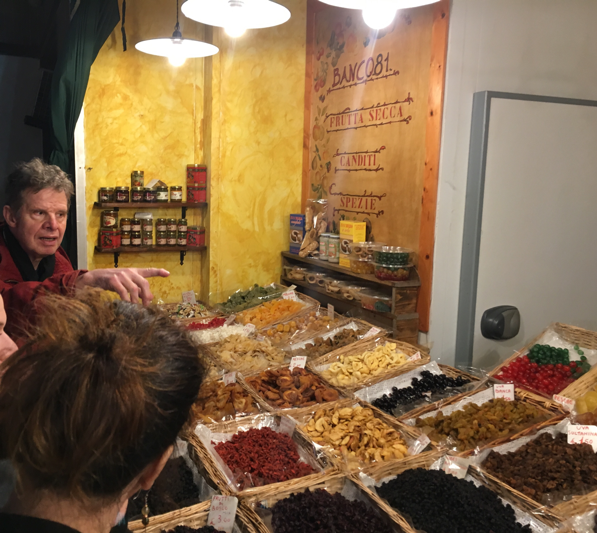
While the food tour was more fun than any school day of my wildest dreams, I couldn’t stop checking the time, and not even a cannoli could redirect my focus—my parents were on the last leg of their flight to Florence!!!
As soon as “class” ended, I hopped in a cab and headed to the airport where I planned to surprise my parents outside of baggage claim. They were expecting to meet me at their airbnb. Before they landed, I quickly scribbled out a sign that read “Mr. & Mrs. Giffin” and stood at their gate holding it like a chauffer, anxiously awaiting their arrival.
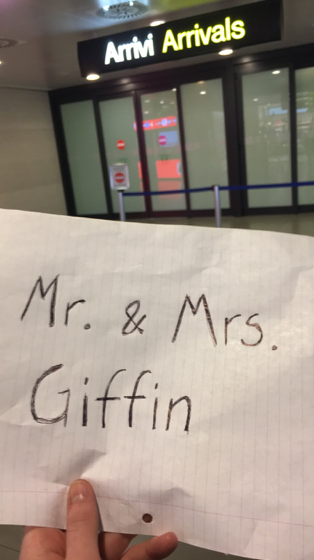
After ten minutes of waiting inside the airport, and two month of not seeing each other, I was reunited with my parents. With a jet-lag induced, relatively confused reaction to my surprise, we joyously embraced. Nothing could feel better than welcoming the most important people in my life to this unbelievable temporary home of mine.
I loaded my zombie parents into a cab where I spoke to the driver in my very broken, just-getting-the-point-across Italian. My parents seemed to be impressed, but only because they don’t know a lick of the language—during his visit, my dad frequently confused “Buenos Aires” (the capital of Argentina) with “Buongiorno” (Italian for good morning).
I was a little worried that my language abilities may have directed the driver to Sicily, but luckily we arrived at the airbnb without a missed turn.
When my parents originally reserved their apartment a few months ago, I gave them a very vague, general, idea of where to stay because you really can’t go wrong in Florence. I simply suggested that they not book a place too far outside of the city’s center and my advice narrowed the search down to a whopping 400 possible airbnbs for rent.
Before their arrival, I spoke to my parents about their finalized apartment arrangements. I asked for the address of their place, hoping to go find it, and snoop around from the outside. I ended up not having to search at all. Completely by coincidence, they’d reserved the apartment building directly next to mine (my address is 11 Borgo Dei Greci and their airbnb is 12 Borgo Dei Greci). We still can’t believe it!
After they’d settled in next-door, we hit the ground running and got straight to eating. I took them to Osteria Santo Spirito, the cozy restaurant directly across the street from my school. This place was the very first bullet point on my compiled “To Show Parents” list, because they dole out the most delicious olive tapenade with their bread, they serve truffle gnocchi that has a smell that makes me weak at the knees, AND they offer 5 euro half portions of pasta (just substantial enough to make you want to undo the top button your pants, but not so much that you need to change into sweats altogether).
We thoroughly enjoyed our delicious dinner and walked home in a pants-unbuttoned, blissful, fullness.

In a strange, removed way, having my parents here has allowed me to witness and re-experience my own acclimation process to Florence, through watching them figure out the ways of the city and the Italian lifestyle. As they struggle with which direction the river is in, which way to turn down the street to get to their apartment from mine, or what Italian greetings are appropriate for what times of the day, I am reminded of experiencing that same utter confusion when I first got here. Watching them absorb all of this new information has made me appreciate just how much I have learned and adapted, without knowing it, since I’ve been here. Now those things that I once had to struggle to remember, are more etched in my mind than the lyrics to “Happy Birthday.”
In spending time with my parents, I have discovered exactly what it is that I’ve learned; I know how to determine the seemingly ambiguous moment in which I should pay for my coffee, the specific time frame during which it’s acceptable to drink a cappuccino (only mornings and after 4 pm), how to find order, and wait for things in this line-less culture, how to skillfully jaywalk while dodging Vespas, bikes, the fastest mini-cars, how to carve out multiple hours of time per meal, and how to discern which yelling matches are arguments and which are just friends saying good-morning.
I’ve come to realize that I’ve also learned the importance of having a big city mentality. There are times here, like back in LA, when people beg for money or are pushy with selling you things or asking you to sign petitions on the street. While my safety has never felt threatened here, I’m usually not interested in buying the products or signing the clipboards; when approached, I keep walking and just shake my head, not saying anything, as to conceal my true, tourist identity.
I’ve particularly grown accustomed to ignoring the large number of harmless yet pestering men that walk around asking you questions, in attempt to grab your attention, in order to sell you a bracelet and a selfie-stick when its sunny, or an umbrella and a poncho when it begins to rain.
On my parents’ second day in Florence, I met up with them after class, for an afternoon so jam-packed with 14 plus miles of tourism, that my mom’s feet actually bled. Sorry Mom!
First and most logically, we grabbed some gelato from Gelateria Santa Trinita and scarfed it down on the bridge by the river.
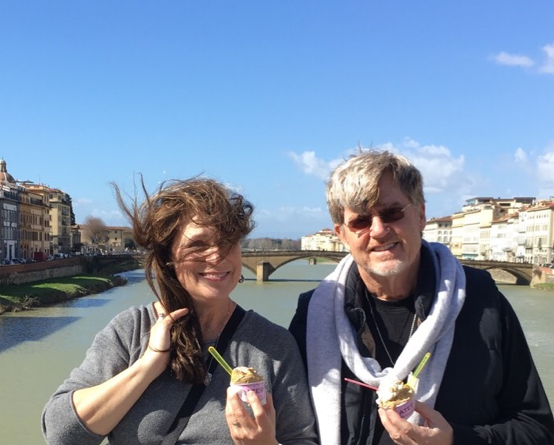
With sugar-filled bellies, we began walking to the next of our many destinations for the day. On our way, one of the infamous men selling bracelets approached us. I kept walking, as it is ingrained in me by now, and my mom followed suit. My dad, on the other hand, being the trusting mid-westerner that he is, couldn’t deny the bracelet seller a friendly handshake when the man motioned to “bring it in bro!” Thinking that would be the end of their pleasant exchange, my dad tried to keep walking after shaking the bracelet man’s hand, however the seller held on tightly and walked along side my dad (a classic bracelet man tactic that I see tourists fall for everyday).
Hand in hand they exchanged pleasantries and talked about where they were from (another one of their classic “buttery-you-up” tactics). Meanwhile, I fast-walked, hiding my face, pretending to fit in amongst the Italians, and definitely not associating with my dad, who was committing the most fragrant “I’m not from around here” foul.
My mom, however, grew more and more concerned, assuming that the bracelet man was distracting my dad with the intentions of pickpocketing him. Still holding his hand, the seller pulled out a bracelet and put it on my dad’s free wrist. In a panic, my mom whipped around to my dad, who was walking ten yards behind us, and shouted, “Phil! We need to go NOW!”
Confused as to her unnecessarily extreme reaction, my dad responded with the elation and enthusiasm of a kid on Christmas morning, “No, look honey!” He exclaimed, “He’s giving me a gift!!! And he has one for you too!” …
My dad thanked the generous gift giver and tried to go on his way, until the vendor said, “I need money for those bracelets to give to my children.”
My dad gave back the gift and learned his first lesson in Florence: walk past the bracelet men.
…
The rest of the week was full of other learning experiences and more fun and laughter than I ever thought possible:

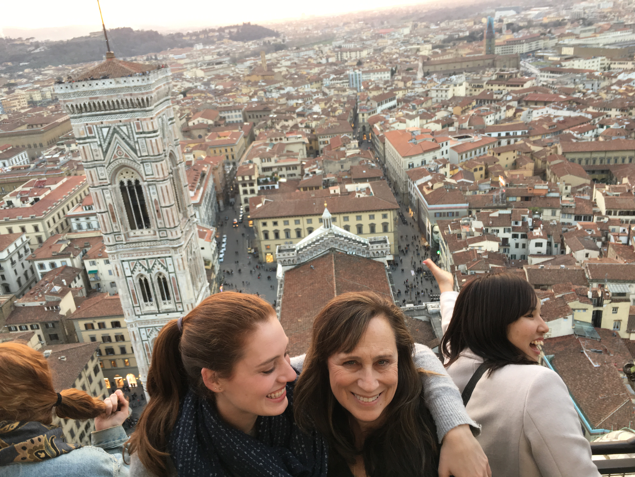
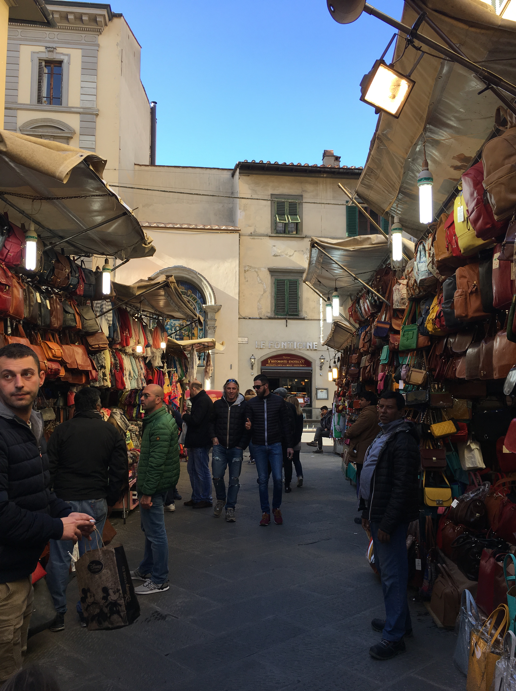
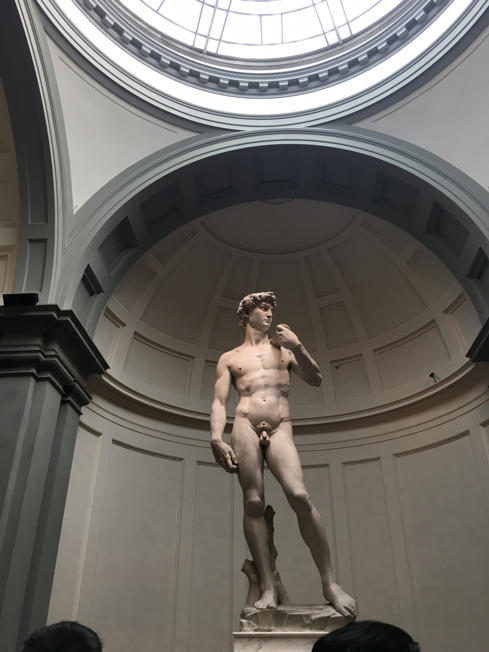

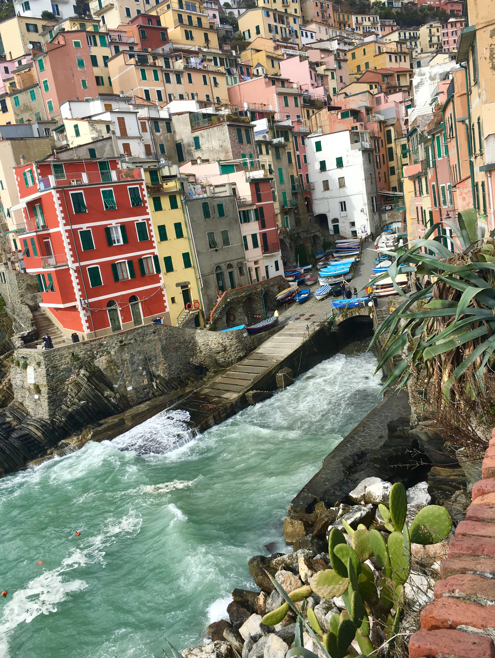

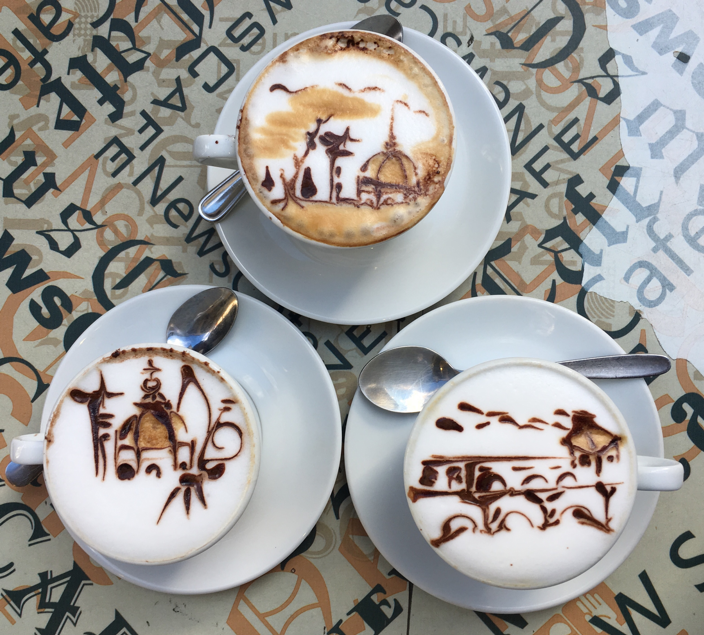


Tonight their fun, food-filled week here came to a bitter-sweet end. At the close of the evening, my mom and dad walked me over to my apartment where we hugged tightly, and said our sentimental see-you-soons.
I waved as they headed back to their apartment to collect their luggage before their departure. I chuckled again, as I watched my mom turn the opposite direction and head the wrong way down my street.
Willa Giffin studied abroad in Florence, Italy in Winter 2017: http://eap.ucop.edu/OurPrograms/italy/Pages/language_culture_florence_quarter.aspx
BY PARIS SUMPTER
Paris explores the Sky Tree tower in Tokyo.
Paris Sumper studied abroad in Tokyo, Japan, in Summer 2017: http://eap.ucop.edu/OurPrograms/japan/Pages/language-and-culture-ICU.aspx
BY BARRY YANG
The Way of the French
When I arrived in France I spoke absolutely no French. Now, approximately a month later, I still speak no French. Well that is an exaggeration, but my comprehension and conversational skills are still very very very low. Unfortunately, the language class offered at Sciences Po Lyon does not contain a beginner’s level. Students with similar levels of French are bunched up in one class. Since everyone speaks mountains more French than me, the lowest level class is still 100 times passed my comprehension level. However, as the French say, c’est la vie.
This brings me to our French language instructor Professor Christophe. A curly haired friendly French man who largely refuses to speak English in class, Professor Christophe has a tendency to call on me to answer questions when he very well understands that my French skills are impoverished. I found the class initially very boring as I understood little to nothing that was going on. However, as time went on, Professor Christophe and I developed a friendly relationship filled with lively incoherent conversations that involved him partially understanding my English and me not understanding his French at all. Even though there is a huge language gap and a steep learning curve, I am having a great time in this class. Professor Christophe is a very nice teacher and takes the time to individually teach me the pronunciations and make sure that I’m not completely clueless as to what is going on. A soft spoken yet firm teacher, Professor Christophe is a lot of fun and has a good sense of humor. I am very glad that he takes my jokes well and enjoys my random comments in English (at least I hope he does). I could not be happier that I am learning French from him, and I really respect and appreciate the effort he puts in both in and out of class to ensure that he is able to help and advance every student regardless of the their French levels.
Yvan celebrating his birthday!

MEET MY FRENCH BROTHER PAUL-ELIOT
I have seen a lot of French students in the streets of Lyon, but none have been as inappropriately funny as my French home-stay brother Paul-Eliot. A 15 year old boy of many not so politically correct and PG jokes, Paul- Eliot constantly shows me French memes and translates them into English for me. I thoroughly enjoy helping him with his English homework and giving him a hard time whenever his teacher gives him a bad mark (all in good fun of course).
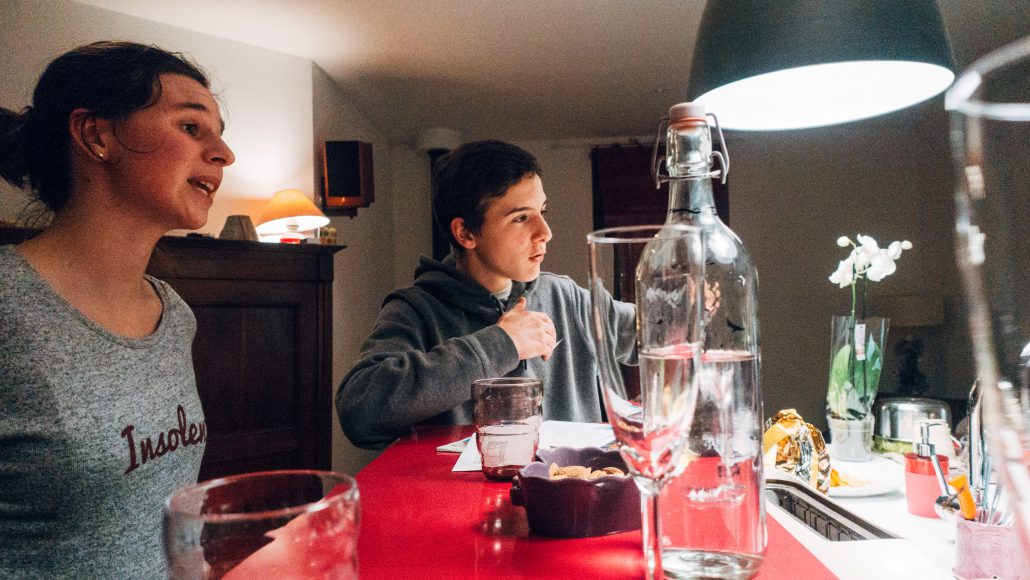
For a 15 year old, Paul-Eliot stays pretty busy. On Thursdays he has almost 9 hours of class and every Wednesday he does not get home from his “Fireman” activity until 8:30PM. Apparently, in France, the Firehouse holds activities where students can go to learn the duties of a fireman and engage in some exercise and workouts. The Firehouse also puts on a “Fireman Ball” where members of the community and participants of the Fireman class are invited to a soiree filled with small eats and dancing. My host family regularly attends; sadly I was not able to join this time because of my trip of Avignon.
Paul-Eliot is just one of the many great characters in my French family. Stay tuned for next week when I introduce my French sister Lison.
A WEEKEND IN ANOTHER SMALL TOWN
If one follows the Rhone river towards the Southern region of France, past Lyon, one arrives in a region known as Provence. While extremely beautiful during the summer, the sights during the winter are not so shabby either. A region that produces some great wines and picturesque postcards, Provence has been one of mine and my girlfriend’s favorite regions. In addition to being very beautiful, the region is also very cheap to get to via Flixbus, Ouibus, or Ouigo. For around 9-12 euros, you can make your way to some beautiful French towns and get away from the humdrum of the cities.
This weekend we visited Nimes, which is only about an hour away from Avignon (our choice of travel for last week). The city is very small, but has some amazing Roman architecture scattered throughout the town. In addition to a small pantheon, there is a very big Colosseum as well as beautiful statues. 20 kilometers outside the city is Pont du Gard. Pont du Gard is the highest of all elevated Roman aqueducts and listed as an UNESCO World Heritage Site for its historical significance. The aqueduct was built as part of a 50 kilometer water system that carried water from a spring at Uzes to the Roman colony of Nimes. At almost 50 meters tall, Pont Du Gard is an amazing architectural feat. It is hard to believe that people were able to build something of this caliber in the first century AD without heavy machinery or tools. That is Roman ingenuity I guess.
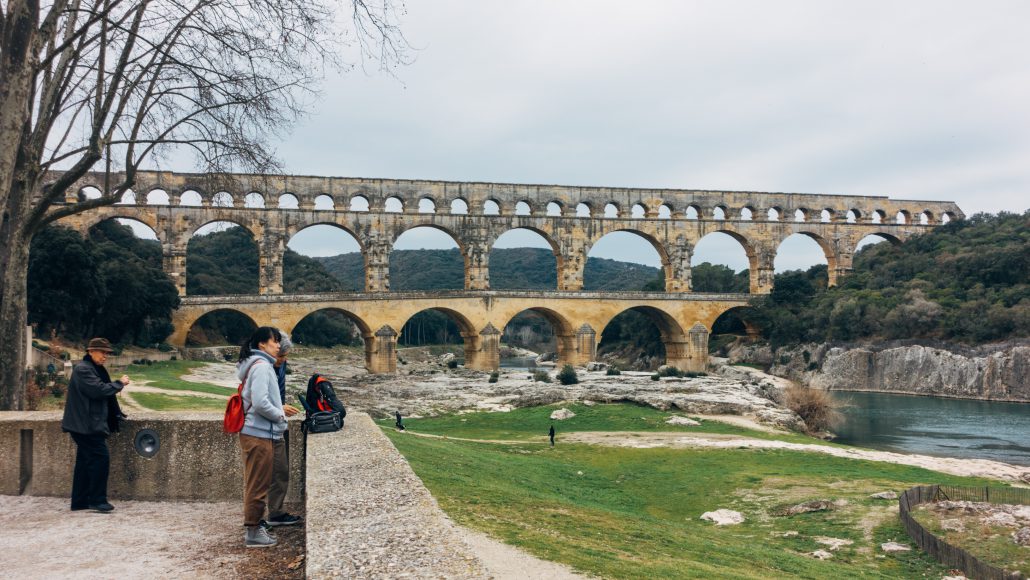
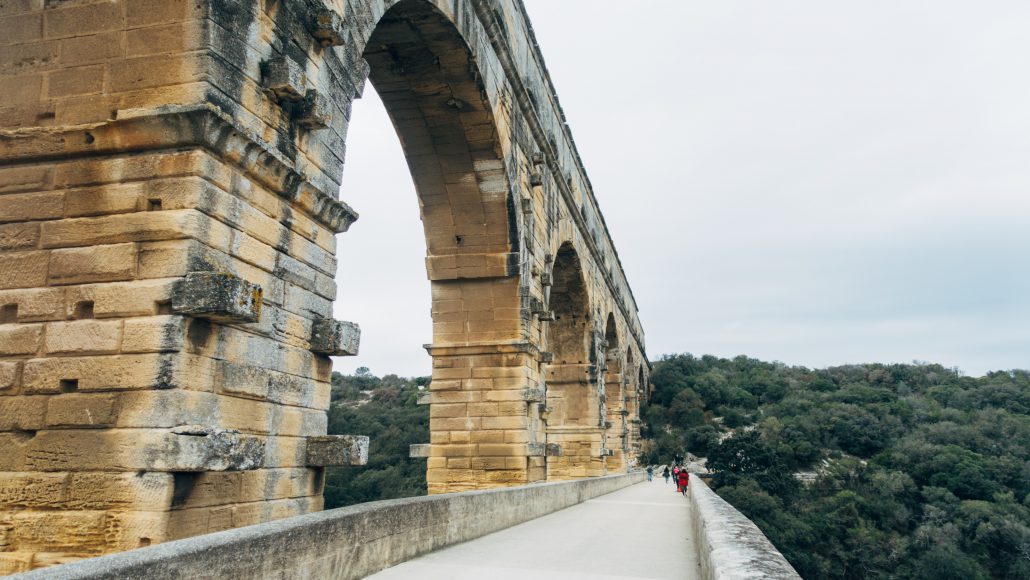
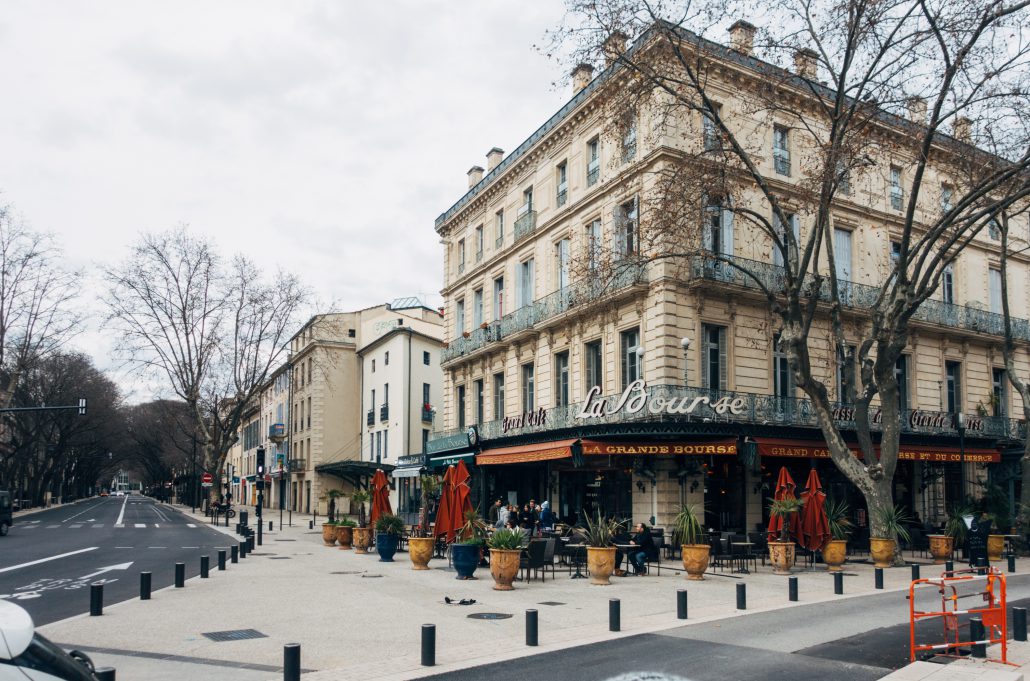
In addition to Pont du Gard, Nimes is just incredibly quaint and cozy. The buildings are extremely close together and the streets very narrow. With only 140,000 inhabitants, the city is sparsely populated despite its small size and there are few crowds like the ones one would see in Lyon or Paris. The public transit in the town should not be disregarded simply due to the city’s size. At only 160 square kilometers, Nimes has arguably a better public transport system than some of the biggest metropolises in the United States. The buses run every 7 minutes and only costs 1.5 euros for a ticket. One can easily get all around town on the bus, and there is little need to own a car. There is even a more extensive transport system that will take you to near by towns such as Uzes, Ales, and Poet du Gard for the same 1.5 euros. Overall, Nimes is a beautiful city and definitely worthy of at least a day trip.
I got the opportunity to fly my drone and make a video of the small city; the video can be found here: https://youtu.be/dSIgv9QDVVU
Barry Yang studied abroad in Lyon, France, in Spring 2017: http://eap.ucop.edu/OurPrograms/france/Pages/default.aspx
